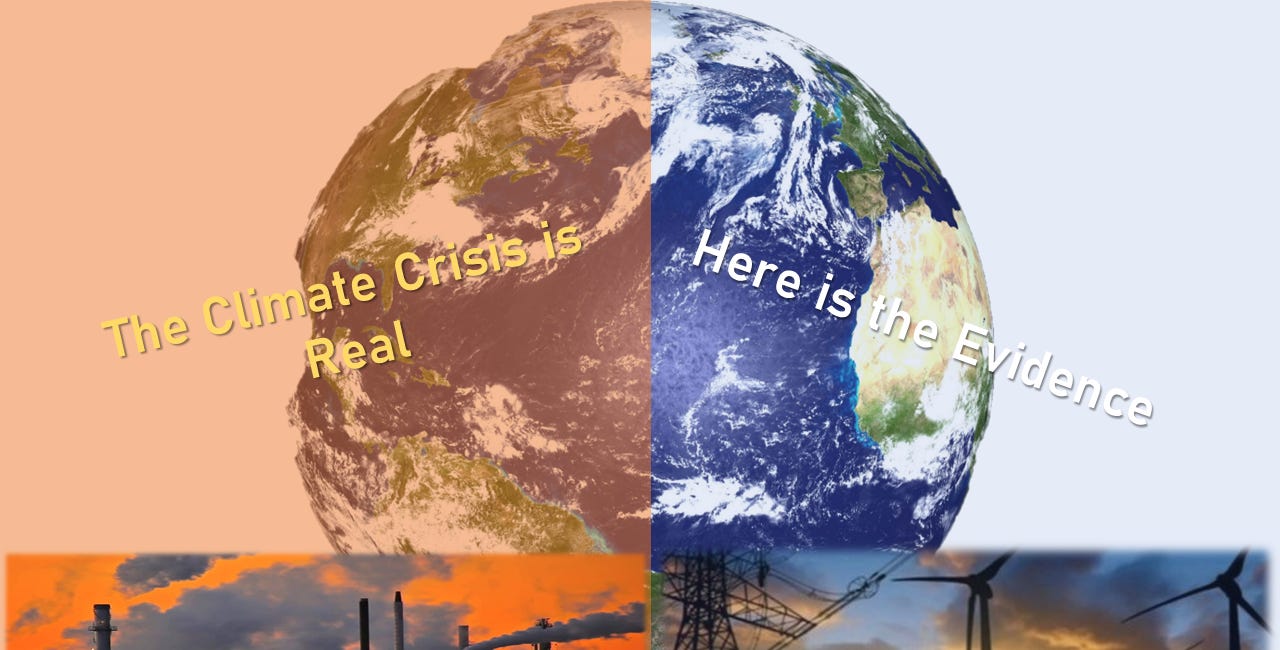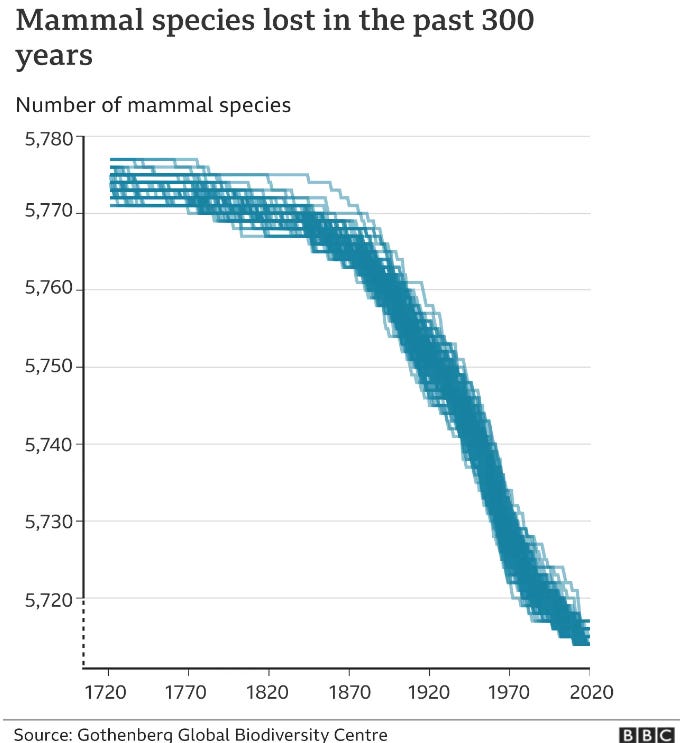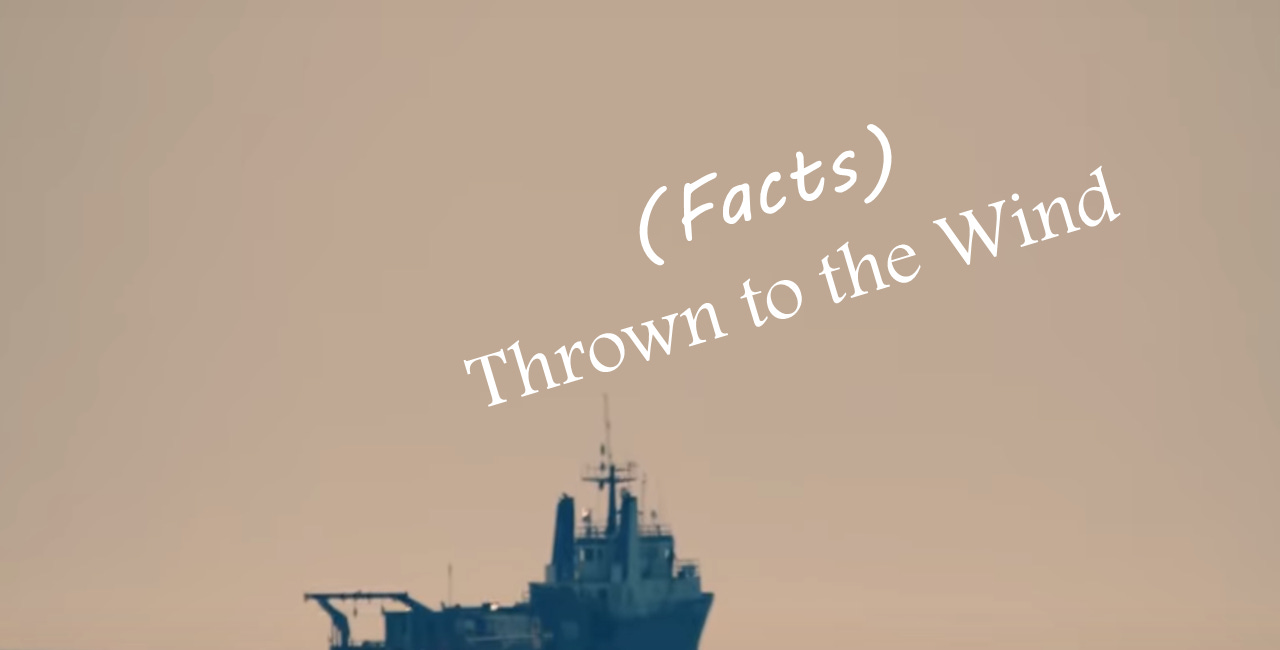Visit the new Evidence Files Law and Politics Deep Dive on Medium, or check out the Evidence Files Facebook and YouTube pages; Like, Follow, Subscribe or Share!
Find more about me on Instagram, Facebook, LinkedIn, or Mastodon. Or visit my EALS Global Foundation’s webpage page here. If you enjoy my work, consider becoming a paid subscriber. Thanks!
The Killer from Space
Around 65 million years ago, something happened that scientists today dryly refer to as the K-T or K-Pg Extinction Event. The incident signified the transition from the Cretaceous Period to the Tertiary or Paleogene. Over a short stretch of time, the majority of all living things on Earth died, relegating their various species to nothing more than a tiny piece of the fossil record. Extinctions occur regularly, and may even be necessary to sustain biodiversity. What differentiates routine extinctions from mass ones is the relative speed at which the latter occurs. Scientists have measured the general rate of extinction of species over epochal time and have, from that, set what is generally called the “background extinction rate.” When extinction rates deviate enough from the background rate, these events are called mass extinctions or biotic crises.
Hidden beneath the Yucatán Peninsula and the Gulf of Mexico, a crater spanning between 90 and 124 miles wide (145 - 200 km) indicates the impact point of a massive asteroid called the Chicxulub impactor. The extraterrestrial rock itself bulged somewhere between 6.2 and 9.3 miles (10 and 15 km) wide and struck at an astonishing speed of about twelve and a half miles per second (20 km/s). Its angle of descent primed it for even more damage, acting almost like a swiftly thrust shovel launching ejecta ever farther.
Describing the forces emanating from this collision between space-rock and Earth crust (never mind the water in between, Chicxulub barely noticed it) defies any reasonable linguistic creativity. Researchers estimate the release of energy at around a hundred terratons of TNT. A terraton is this many kilograms: 1,000,000,000,000,000, or this many pounds: 2,200,000,000,000,000. All those zeroes equate to around a billion times the power of the Hiroshima atomic bomb. Chicxulub caused an explosion powerful enough to redistribute sediment across 48,000 cubic miles. That’s a square on the surface that is 1 mile (1.6 km) wide and 1 long, with a cube-shaped area extending 1 mile down below the surface, multiplied by 48,000. By comparison, the relative physical zone of annihilation from the Hiroshima explosion covered an approximate radius of 1.2 miles (2 km) with little damage below the surface.
Upon impact, the asteroid sent debris chunks as high into the air as Mount Everest, spreading them more than 3,700 miles (6,000 km) from the strike point. That means boulder-sized hunks of rock hurled skyward from Mexico nearly to Africa’s west coast or northward onto the ice of Greenland. Upon the creation of the massive subsurface crater, the ocean—as it is wont to do—rushed back to fill the void, triggering massive tsunamis. These epic waves contained such power that they formulated rings of rock around the crater, effectively raising a new underwater mountain range. Forces of this magnitude radiated well beyond ground-zero. They triggered massive earthquakes as far away as Argentina. The initial mega-tsunami itself traveled nearly halfway across the planet, possessing 30,000 times the energy of the 2004 Indian Ocean Tsunami.
Obviously, the assault immediately snuffed out any nearby life, but its resonant effects would herald an era of misery and death across the globe. The enormously high pressure of the shockwave ignited a near-instantaneous decomposition of sedimentary rock and rapid evaporation of seawater leading to a massive gaseous injection into the atmosphere. In mere seconds, the event vaulted up and outwards roughly 425 Gigatons (Gt) of CO2 and 325 Gt of Sulfur at speeds exceeding 0.6 miles per second (1 km/s). Such huge amounts of sulfur quickly turned into an aerosol combining with water vapor. This mixture blotted out the sun, causing a perpetual darkness lasting years. Wildfires raged in areas up to a thousand miles (1,600 km) from the crater, caused by the friction of rock particulates churning in the sky. As these materials descended back toward the surface, the kinetic energy they produced transformed into virtually un-survivable heat. Of the creatures who somehow initially clung to life, most ultimately died because “the entire Earth was bathed with intense infrared radiation from ballistically reentering ejecta” for hours after impact.
The sulfur drizzled back down to Earth in the form of acid rain; the majority of it poured into the oceans. This toxic storm raised the acidity of the seas, depleting the ability of many mollusks and other shelled creatures from reproducing, eliminating most of them. This severely disrupted a substantial part of the food chain and incited an “evolutionary turnover… far above typical background rates.” Species reliant on oceangoing prey suffered catastrophic losses that reverberated to land animals. Creatures that managed to survive—just 25% of the overall life diversity—generally enjoyed the fortune of circumstance that insulated them from the worst effects. Birds and tree-dwelling mammals, for example, survived at rates far higher than most others. The reasons for the viability of each individual group remain not fully determined.
The dust and soot that drastically diminished sunlight significantly altered Earth’s flora. With so little sun, much of the world’s temperatures plunged in the years following the arrival of the asteroid. In tropical areas, the annual average plummeted by as much as 40° Fahrenheit, eventually eliminating whole genera of plants. As with the extinctions of seafaring species, this fundamentally changed the ecological landscape. The death of plants took with them the animals that fed upon them—every herbivore dinosaur species among many others. Over time, minerals like nitrogen and phosphorus formed, pervading the noxious cloud that lazily sunk toward the surface for centuries. Throughout the areas where mass death left an almost silent void, these minerals slowly spread across the ground, resettled under the force of gravity and strewn about by the wind. These minerals enhanced fertilization in many areas, particularly the places where we now see the dense rain forests of Latin and South America. Today’s lush tropical forests account for more than half of all species on the planet, a direct product of the regrowth of this atmospheric reseeding following the K-Pg event. Nevertheless, it would take millions of years for the planet to recover. What rose from the ashes served as a new home for new species—most of the old world and its inhabitants was long left behind.
The Human Asteroid
Most people by now are aware of the rampant destruction human civilization is leveling upon our planet, but the focus is often on climate change. Without doubt, the implications of an evolving climate are severe. They are reflected in frequent and increasing bouts of lethal heatwaves, soaring wildfires, depleting glaciers and other sources of freshwater, worsening storms, severe flooding, persistent droughts, and dying oceans. The evidence of all these things is incontrovertible. Yet, global leaders largely ignore them in their persistent protection of capitalist avarice.
A lesser known calamity, though perhaps one with the most far-reaching implications, is the human-incited mass extinction occurring right now. Gerardo Ceballos and Paul R. Ehrlich plainly explain it: “current animal species extinction rates are estimated to be hundreds or thousands of times higher than the background rates that prevailed for millions of years prior to the agricultural revolution.” Under the stewardship of human beings, Earth is undergoing a “mutilation of the tree of life,” and its potential consequences are frightening. To illustrate, the extinction numbers among vertebrates over the last 500 years would previously have taken more than 10,000. Observing this phenomenon is easy for larger, more visible creatures like elephants, whose population has decreased by 60% for savannah dwellers and nearly 90% for African forest elephants over the last century and a half. But the ecological balance that enables humans to survive with limited suffering depends upon much more than the obvious subjects of WWF commercials.
The IUCN Red List denotes the “global conservation status of animal, fungi and plant species.” Its numbers are not good. Of more than 134,400 species it has thus far tracked, more than 44,000 of those are considered “threatened” or worse. According to IUCN, that assessment comprises just 28% of known species. Although most governments and many scientific organizations rely on the Red List, it is primarily funded by donations, which means that its calculations take time and suffer limitations. This suggests that the situation is likely more dire than their numbers indicate. Scientists wrote in a report to world leaders in 2019 that at least 25% of all species on the planet—flora and fauna—face the possibility of extinction. Even parasites are not exempt, with scientists predicting a possible loss of 33% of them in the next few decades. Losses of this magnitude portend “profound” effects on ecosystems across the world. Parasites play as pivotal a role as any other in maintaining the balance of ecosystems.
Mass extinctions occurred five times previously in history, and everyone of them required millions—or tens of millions—of years to recover. But the way the sixth one is unfolding is altogether different. Unlike all earlier incidents that resulted from volcanoes or interstellar intrusions, the current one emanates from:
the spread of non-native species around the world; a single species (us) taking over a significant percentage of the world’s primary production; human actions increasingly directing evolution; and the rise of something called the technosphere.
Distributing species across the globe into non-native ecospheres reduces the resilience of those zones and wreaks considerable havoc on everything from food and water supplies to the physical layout of the land. One example, that may resonate with humans most, is the zoonotic spread of disease. Since 1970, around 200 diseases have spread from wild animals to people, which now costs around $1 trillion globally each year to control. As proven by COVID, even spending inordinate amounts of money does not guarantee the prevention of global pandemics. Such afflictions become more capable of infecting humans via increased exposure vectors and the pathogens’ ability to adapt. This is even happening in the arctic where the melting of permafrost is releasing long-dormant viruses. The introduction of invasive species drives local fauna closer to humans, raises the chances of the proliferation of non-native viruses and bacteria, and thereby increases the odds of new outbreaks. Adding zombie viruses to the mix means that humans will have no immunity to some emerging pandemics.
Spreading pathogens also accompanies food insecurity, and the latter exacerbates the former. As the climate changes, net agricultural production tends to suffer more than benefit. While it is true that some areas’ climate will become more amenable to agriculture, it will take a long time and significant upheaval to begin farming there at rates comparable to current agriculturally dominant regions. The places where agriculture is currently most productive, however, likely will see substantial decreases in productivity, as it is in these places where the changing climate is most profound. This will lead to rising incidents of food shortages for vast numbers of people, particularly in regions where climate alterations are happening faster and more dramatically. Many of those same areas face simultaneous pending or ongoing water crises from depleting glaciers and droughts. One report highlighted the relationship between agriculture and pandemics, writing “Land use change is cited as the cause of over 30% of emerging infectious diseases, and correlates significantly with the emergence of novel zoonoses globally.” Malnourished people are acutely susceptible to illnesses, which also manifest more severely in those people. Putting these problems together, future apocalypses are inevitable.
Another major driving force behind the homogenization of species and the destruction of ecospheres is something called the “technosphere.” Coined by geologist P. K. Haff, the technosphere is the “interlinked set of communication, transportation, bureaucratic and other systems that act to metabolize fossil fuels and other energy resources.” Put another way, it is the “summed material output of the contemporary human enterprise.” Since 1950, this sum of material has exponentially grown. Over these same roughly seventy years, the “fundamental shifts in the state and functioning of the Earth System” cannot be explained by anything other than human activities. In 2020, the Earth hurdled over an astounding tipping point: the mass of stuff humans have made for the first time exceeded the sum total of biomass on the planet. Biomass refers to “the weight or total quantity of living organisms of animal or plant species.”
To manufacture all these non-natural things, humans have altered entire landscapes at scales never equaled on the geological scale. For example, the amount of earth—dirt—people have transplanted exceeded all natural processes, such as erosion, all the way back in 1990, and has only increased since. This resulted in massive changes in localized ecosystems, especially river systems and watersheds. Such alterations diminish natural protections against massive flooding, themselves promulgated by worsening storms, more frequent incidence of heavy rainfalls, and other climate-change-driven events. The devastation Hurricane Katrina wrought on New Orleans nearly 20 years ago arose from precisely this issue. Technosphere production also contributes to deforestation, desertification, droughts, and wildfires, among numerous other calamities.
Conclusion
There is no question that climate change science and analyzing environmental destruction is rife with complexity. What is undeniable—and decidedly simple—is that the destruction is occurring, and surging. Those arguing otherwise do so from three primary positions: protecting a capital-driven agenda, succumbing to defeatism, or bowing to fear. The latter two interweave. Fear stems from the notion that people’s lives will be brutally upheaved by adopting cleaner, greener solutions. This mindset is promulgated by media and agenda-harboring interests, who all but insist that implementing real solutions is virtually impossible. This is, of course, not true at the moment, but will become so as little of substance is done. Exponentially worsening problems will indeed require exponentially more dramatic responses to solve them if left untreated. Capitalism is the primary culprit. Ample evidence exists that humans can successfully coexist with the environment in such a way that both can thrive for eons to come. But the ideological principle that success depends on the acquisition of stuff—whether financial or material wealth—is a recipe for destruction. Yet, it remains the choice ideology of the day.
To uphold the absurdity of the notion that unchecked growth is just fine, the vast resources of corrupt wealth-holders go toward distracting the masses from the calamity. They provide a diversion from two fundamental facts: 1) that the masses could prosper if the balance of wealth was more evenly and fairly distributed, and 2) that the masses are digging their own ecological graves to feed their insatiable, self-entitled overlords. Make no mistake, the plebes will suffer first and worst from the inevitable disasters this global degradation is inviting.
George Monbiot wrote:
If we cannot pierce the glassy surface of distraction, and engage with what lies beneath, we will not secure the survival of our children or, perhaps, our species. But we seem unable or unwilling to break the surface film. I think of this strange state as our “surface tension”. It’s the tension between what we know about the crisis we face, and the frivolity with which we distance ourselves from it.
The warnings of the people who have devoted their lives to examining the problem and proffering solutions have gone unheeded. But the planet cares not for the responsiveness of its inhabitants. Stay, leave, die… it makes no difference to Earth or the rest of the cosmos. It only matters to us, but we cannot remove our eyes from the shiny objects dangled by the profiteers of our own demise.
For an analysis of the deceptions and distractions disseminated by the agenda-driven destroyers, click below.
***
I am a Certified Forensic Computer Examiner, Certified Crime Analyst, Certified Fraud Examiner, and Certified Financial Crimes Investigator with a Juris Doctor and a Master’s degree in history. I spent 10 years working in the New York State Division of Criminal Justice as Senior Analyst and Investigator. I was a firefighter before I joined law enforcement. Today I work both in the United States and Nepal, and I currently run a non-profit that uses mobile applications and other technologies to create Early Alert Systems for natural disasters for people living in remote or poor areas. For detailed analyses on law and politics involving the United States, head over to my Medium page.








This article is spot on and is terrifying and makes us helpless going forward without immediate change of all 7 to 8 billion of us . And I don't see it happening ever. Our fate has been sealed 😔.